Duke Ellington: The Top 20 icons in Jazz history
Considered one of the greatest jazz composers of all time, Duke Ellington had an enormous impact on the popular music of the late 20th century.
“It don’t mean a thing if it ain’t got that swing.”
Considered one of the greatest jazz composers of all time, Duke Ellington had an enormous impact on the popular music of the late 20th century. Among his more than two thousand songs are such hits as “In A Sentimental Mood,” “Sophisticated Lady,” “I Got It Bad And That Ain’t Good,” and “I’m Beginning To See The Light.” For almost fifty years he toured the world as a band leader and piano player. Today his recordings remain among the most popular jazz of the big-band era.
Please, subscribe to our Library.
If you are already a subscriber, please, check our NEW SCORES’ page every month for new sheet music. THANK YOU!
Early Career
Born in Washington D.C. in 1899, Edward Kennedy Ellington, better known as “Duke,” began playing piano as a child. His mother, who also played the piano, oversaw his education, and by the time he was seventeen he began playing professionally. Making his name as a piano player in Washington, Ellington started to compose his own music.
In 1923 he moved to New York, and the following year formed his own band, the Washingtonians. By 1927, Ellington’s band had found a small base of fans and secured an engagement at Harlem’s famous Cotton Club. This proved to be a major turning point in Ellington’s career, providing him with access to larger audiences through radio and recordings.
Duke’s Band
In 1931 Ellington left the Cotton Club and began a series of extended tours that would continue for the rest of his life. For Ellington, the big band was not simply made up of five reeds, four trumpets, three trombones, drums, a bass, and a piano; it was made up of individuals. Where other composers had concerned themselves with creating a sound that unified the many instruments into one voice, Ellington believed in letting the dissonant voices of each musician play against each other.
He wrote music that capitalized on the particular style and skills of his soloists. For this and many other reasons, his soloists often stayed with him for extended periods. Among the best members of his band were Jimmy Blanton, Johnny Hodges, Cootie Williams, and Harry Carney (who was in the band for nearly every one of its forty-seven years).
Browse in the Library:
| Artist or Composer / Score name | Cover | List of Contents |
|---|---|---|
| A dozen A Day Book 1 Technical exercises for the piano |
 |
A dozen A Day Book 1 Technical exercises for the piano |
| A dozen A Day Book 2 Technical exercises for the piano |
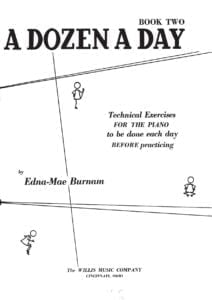 |
|
| A dozen A Day Book 3 Technical exercises for the piano |
 |
|
| A dozen A Day Book 4 Technical exercises for the piano |
 |
|
| A dozen A Day Mini Book Technical exercises for the piano |
 |
|
| A dozen Day Preparatory Book Technical exercises for the piano |
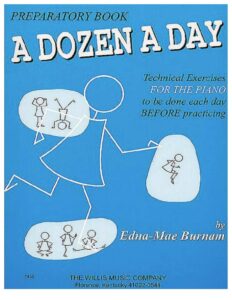 |
|
| A Farewell To Arms Love Theme From A Farewell To Arms film by Mario Nascimbene Francis Webster 1957 |
 |
|
| A Felicidade (Antonio Carlos Jobim) | ||
| A Festival Gathering Of Carols (Musescore File).mscz | ||
| A Fine Frenzy – Almost Lover |
 |
|
| A Fistful of Dollars (Ennio Morricone) | ||
| A Generative Theory Of Tonal Music by Fred Lerdahl and Ray Jackendoff (Book) |
 |
|
| A Guide To Guitar Chords by Curt Sheller |
 |
A Guide To Guitar Chords by Curt Sheller |
| A Guide To Musical Analysis by Nicholas Cook (Book) |
 |
|
| A Handbook Of Piano Playing (By Eric Hope) (1962) |
 |
|
| A Heart Full Of Love (Musescore File).mscz | ||
| A love suicide (Yutaka Minobe) | ||
| A Love Supreme (by Ashley Kahn) The story of john Coltrane’s signature album (Book) |
 |
|
| A Media Luz (Edgardo Donato) | ||
| A Modern Approach To Jazz Rock And Fusion For Guitar with Tablature |
 |
A Modern Approach To Jazz Rock And Fusion For Guitar |
| A Modern Method For Guitar (Berklee) 1 by William Leavitt |
 |
A Modern Method Berklee 1 |
| A Modern Method For Guitar (Berklee) 2 by William Leavitt |
 |
A Modern Method For Guitar (Berklee) 2 |
| A Modern Method For Guitar (Berklee) 3 by William Leavitt |
 |
A Modern Method For Guitar (Berklee) 3 |
| A MOZART REINCARNATED (Ennio Morricone) |
 |
|
| A Mozart Reincarnated by Ennio Morricone (Musescore File).mscz | ||
| A New Approach To Ear Training by Leo Kraft (BOOK) |
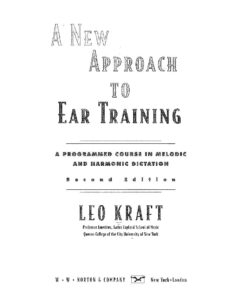 |
|
| A New Approach To Piano Technique (By Ruth A. Dickerson) (1962) |
 |
A new approach to piano technique |
| A Night In Tunisia – Dizzy Gillespie.mscz | ||
| A Pedal Method For The Piano (By Albert F Venino) (1893) |
 |
|
| A Popular Account Of Ancient Musical Instruments And Their Development by William Lynd (Book 1897) |
 |
|
| A Rockin’ Christmas Piano Vocal Guitar |
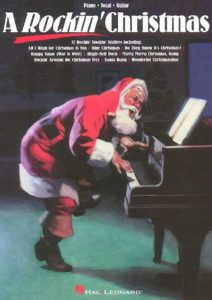 |
A Rockin’ Christmas Piano Vocal Guitar Contents — Rockin Christmas |
| A Single Man – George’s Waltz (Shigeru Umebayashi) | ||
| A Single Man – Stillness of the Mind (Abel Korzeniowski) | ||
| A Smooth Jazz Christmas – Mellow Seasonal Favorites for Piano arr. Roger House |
 |
A Smooth Jazz Christmas – Mellow Seasonal Favorites for Piano arr. Roger House |
| A Song For You – Leon Russell Ray Charles (Musescore File).mscz | ||
| A Star Is Born – Always Remember Us This Way Lady Gaga |
 |
|
| A Star Is Born – Shallow Lady Lady Gaga |
 |
|
| A Tale Of Two Sisters Ost – Epilogue Piano Solo |
 |
|
| A Thousand Years – Twilight OST (Christina Perri) | ||
| A Time For Love – Johnny Mandel |
 |
|
| A Time For Us – Guitar TABlature |
 |
|
| A Time For Us (Love Theme from Romeo and Juliet) Nino Rota |
 |
|
| A Time For Us (Romeo and Juliet OST) Nino Rota | ||
| A Touch Of Jazz 14 well-known hymns, gospel songs and contemporary praise songs by Wolaver Bill |
 |
A Touch Of Jazz 14 well-known hymns, gospel songs and contemporary praise songs by Wolaver Bill |
| A Tribute To Ella Fitzgerald Piano Vocal Guitar |
 |
A tribute to ELLA FITZGERALD |
| A Walk To Remember – Only Hope | ||
| A whiter shade of pale – Procul Harum | A whiter shade of pale – Procul Harum | |
| AaRON U-turn Lili Piano |
 |
|
| Ab Ovo – Joep Beving (Musescore File).mscz | ||
| Abba – Abba Gold – Greatest Hits |
 |
ABBA Gold Geatest Hits booksong sheet music |
| Abba – Chiquitita | ||
| Abba – Dancing Queen | ||
| Abba – Fernando | ||
| Abba – I Have A Dream | ||
| Abba – Like An Angel Passing Through My Room | ||
| Abba – Mamma Mia | ||
| Abba – Slipping Through My Fingers | ||
| Abba – Thank You For The Music | Abba-Thank-You-For-The-Music 1st page | |
| ABBA – Thank You For The Music (Piano Vocal Guitar) | ABBA – Thank You For The Music (Piano Vocal Guitar) | |
| ABBA – Thank You For the Music (Piano vocal Guitar) (Musescore File).mscz | ||
| Abba – Thank You For The Music Piano & vocal | Abba – Thank You For The Music-abba-satb | |
| Abba – The Winner Takes It All | ||
| ABBA Dancing Queen Easy Piano Solo |
 |
|
| ABBA Fernando (Piano Solo arr.) |
 |
|
| ABBA Fernando (Piano Solo arr.).mscz | ||
| ABBA Greatest Hits |
 |
ABBA GREATEST HITS SHEET MUSIC BOOK |
| ABBA I Have A Dream |
 |
|
| Abba The Very Best Vol 1 Easy Piano Hans Gunter Heumann Pop Classics For Piano |
 |
Abba The Very Best Vol 1 Easy Piano |
| Abba The Very Best Vol 2 Easy Piano Hans Gunter Heumann Pop Classics For Piano |
 |
Abba The Very Best Vol 2 Easy Piano |
| Abbey Lincoln Songbook |
 |
Abbey Lincoln Songbook |
| Abbey Lincoln Songbook Piano Vocal Guitar Chords |
 |
Abbey Lincoln Songbook Piano Vocal Guitar Chords |
| Abdullah Ibrahim – The Piano World Of |
 |
Abdullah Ibrahim, The Piano World Of |
| Abdullah Ibrahim The African Piano Of Abdullah Ibrahim Vol 1 |
 |
Abdullah Ibrahim The African Piano Of Abdullah Ibrahim Vol 1 |
| Abdullah Ibrahim The Wedding (piano solo transcription sheet music, partition) |
 |
|
| Abel Korzeniowski – Death Is My Heir (from Romeo and Juliet) |
 |
|
| ABRSM Jazz Piano Pieces Grade 1 to 5 |
 |
ABRSM Jazz Piano Pieces Grade 1 to 5 ABRSM Jazz Piano Pieces Grade 5ABRSM Jazz Piano Pieces Grade 5 |
| ABRSM Piano Exam Pieces Grade 1 (2016) |
 |
ABRSM Piano Exam Pieces Grade 1 (2016) |
| ABRSM Piano Scales, Arpeggios Grade 8 |
 |
|
| ABRSM Piano Scales, Arpeggios and broken chords Grade 1 |
 |
|
| ABRSM Piano Scales, Arpeggios and broken chords Grade 4 |
 |
ABRSM Piano Scales, Arpeggios and broken chords Grade 4 |
| ABRSM Piano Scales, Grade 2 A Guide for Students and Teachers | ABRSM Piano Scales, Grade 2 A Guide for Students and Teachers | |
| ABRSM – Time pieces for guitar vol. 1 |
 |
|
| ABRSM – Time pieces for guitar vol. 2 |
 |
|
| ABRSM 2017 18 Piano Exam Pieces Grade 1 |
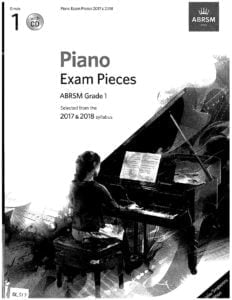 |
ABRSM 2017 18 Piano Exam Pieces Grade 1 |
| ABRSM 2017 18 Piano Exam Pieces Grade 2 |
 |
ABRSM 2017 18 Piano Exam Pieces Grade 2 |
| ABRSM 2017 18 Piano Exam Pieces Grade 3 |
 |
|
| ABRSM 2017 18 Piano Exam Pieces Grade 4 |
 |
|
| ABRSM 2017 18 Piano Exam Pieces Grade 5 |
 |
|
| ABRSM 2017 18 Piano Exam Pieces Grade 6 |
 |
|
| ABRSM 2017 18 Piano Exam Pieces Grade 7 |
 |
|
| ABRSM 2017 18 Piano Exam Pieces Grade 8 |
 |
|
| ABRSM 2021-2022 Piano Exam Pieces Grade 1 |
 |
|
| ABRSM 2021-2022 Piano Exam Pieces Grade 2 |
 |
|
| ABRSM 2021-2022 Piano Exam Pieces Grade 3 |
 |
|
| ABRSM 2021-2022 Piano Exam Pieces Grade 5 |
 |
|
| ABRSM 2021-2022 Piano Exam Pieces Grade 6 |
 |
|
| ABRSM 2021-2022 Piano Exam Pieces Grade 8 |
 |
|
| ABRSM 2021-2022 Piano Exam Pieces Initial Grade |
 |
ABRSM 2021-2022 Piano Exam Pieces Initial Grade |
| ABRSM Aural Training In Practice Book 1 Grades 1 to 3 |
 |
|
| ABRSM Aural Training In Practice Book 2 Grades 4 and 5 |
 |
|
| ABRSM Discovering Music Theory (Complete) Grades 1 to 5 Workbook by Simon Rushby (2020 Exams) |
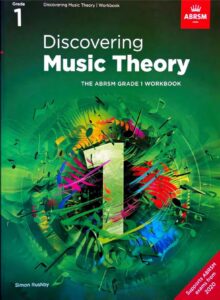 |
ABRSM Discovering Music Theory (Complete) Grades 1 to 5 Workbook by Simon Rushby (2020 Exams) contents |
| ABRSM Erster Verlust Grade 4 ABRSM Piano Exam Pieces 2021 & 2022 |
 |
|
| ABRSM Etude In A Minor – Dmitry Kabalevsky ABRSM Grade 4 Piano Exam Pieces 2021 & 2022 |
 |
|
| ABRSM Grade 2 – Inter-City Stomp byChristopher Norton From Microjazz Collection (Sheet Music) |
 |
|
| ABRSM Initial Grade Piano Exam Pieces 2023 2024 |
 |
|
| ABRSM Minuet and Trio D 41 No 21 – Franz Schubert ABRSM Grade 4 Piano Exam Pieces 2021 & 2022 |
 |
|
| ABRSM More Music Theory Sample Papers Grade 5 For New Format |
 |
|
| ABRSM Music Theory In Practice, Grade 1 (Eric Taylor) |
 |
|
| ABRSM Music Theory In Practice, Grade 2 (Eric Taylor) |
 |
|
| ABRSM Music Theory Past Papers Grade 1 2004 |
 |
|
| ABRSM Music Theory Past Papers Grade 4 2016 |
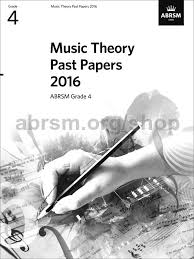 |
|
| ABRSM Music Theory Past Papers Grade 5 2012 |
 |
|
| ABRSM Music Theory Past Papers Grade 6 2013 |
 |
|
| ABRSM Nikki Iles Danny Boy ABRSM Piano Exam Grade 8 2023 Jazz Piano arr. inspired by Bill Evans |
 |
|
| ABRSM Nikki Iles Friends Book 1 Intermediate Jazz Pieces For Piano |
 |
ABRSM Nikki Iles Friends Book 1 Intermediate Jazz Pieces For Piano |
| ABRSM Nikki Iles Friends Book 2 Intermediate To Advanced Jazz Pieces For Piano |
 |
ABRSM Nikki Iles Friends Book 2 Intermediate To Advanced Jazz Pieces For Piano |
| ABRSM Nikki Iles The Elephant Parade ABRSM piano Exam |
 |
|
| ABRSM Piano 2025-2026 Grade 8 C3 A Nightingale Sang in Berkeley Square by Sherwin – Maschwitz |
 |
|
| ABRSM Piano Exam 2007-2008 Grade 3 |
 |
|
| ABRSM Piano Exam 2015-16 Grade 3 |
 |
ABRSM Piano Exam 2015-16 Grade 3 |
Working with Billy Strayhorn
In 1939, Billy Strayhorn joined the band as an arranger, composer, and sometimes pianist. The two worked well together, continuing in the tradition that Ellington had built. Strayhorn’s contribution to Ellington’s achievements at the time were significant, and even some of their most popular tunes (such as “Take The A Train”) were written by Strayhorn.
Though not as well known as much of Ellington’s other work, pieces such as “Jack the Bear,” “Ko-ko,” and “Cotton Tail” (done between 1939 and 1942), had a profound influence on much of the jazz composition and performance that followed. Though Ellington continued to compose and perform regularly throughout the 1940s and 1950s, the public demand for big-band music had faded. It was not until 1956, with a triumphant performance at the Newport Jazz Festival, that Ellington re-emerged as an important voice in contemporary music.
For most of his time as a composer and bandleader, Ellington underplayed his role as a pianist. Throughout the 1950s and early 1960s he began performing with a number of the other great musicians and composers of the time, making albums that included DUKE ELLINGTON AND JOHN COLTRANE (1962), MONEY JUNGLE (1962, with Max Roach and Charles Mingus), and DUKE ELLINGTON MEETS COLEMAN HAWKINS.

Among the younger generations, Ellington was both a symbol of the traditional modes of jazz music and the finest example of how to transcend those modes. The beauty and energy of earlier pieces such as “Mood Indigo” remained alive in even the final years of his life. In May of 1974, Ellington died of lung cancer in New York City.
In his more than fifty years as a professional musician, Ellington had been nominated for a Pulitzer Prize, elected to the National Institute of Arts and Letters, awarded a doctor of music degree from Yale University, given the Medal of Freedom, and, most importantly, built the foundations from which much of the best American music consequently grew.
Duke Ellington – Diminuendo and Crescendo in Blue
It’d be impossible to overlook the importance of big bands in the development of jazz, and of musicians like Benny Goodman, Tommy Dorsey, Fletcher Henderson and Count Basie in launching the swing era of the 30s and 40s. But the band that continued unbroken, unscathed, and continually inventive during those decades, and which most successfully survived the end of the big band era, was Duke Ellington’s.
He wrote intricate parts for particular soloists in his band, but occasionally he just allowed them to let rip — and that’s what happened at the 1956 Newport Jazz Festival when tenor saxophonist Paul Gonsalves came to the mic and launched into 27 of the most exciting choruses ever recorded – leaving the audience baying for more, standing on their chairs and cheering!
Ellington At Newport 1956 Often regarded as the best performance of his career, in 1956, Duke Ellington and his band recorded their historic concert at the Newport Jazz Festival, revitalizing Ellington’s waning career. Jazz promoter George Wein describes the 1956 concert as “the greatest performance of Ellington’s career…
It stood for everything that jazz had been and could be.” Ellington had lately been connecting the songs “Diminuendo in Blue” and “Crescendo in Blue” in a medley via a tenor solo from saxophonist Paul Gonsalves. At Newport, Gonsalves summoned a 27-chorus workout so inspired and transcendent that the audience was practically rioting by the time he had finished. Orchestra and audience both remained at a fever pitch for the rest of the show (vividly captured on the live album Ellington at Newport).
Duke Ellington Interview: What is “American Music?”
In 1963, Duke Ellington gave an interview on Swedish Television remarking that in the hundred years since the Emancipation Proclamation the demands for equality were growing stronger. At the time, President Kennedy had promised to introduce a Civil Rights bill in Congress, and Ellington was about to go on an official State Department tour representing American culture in the middle east and India.
African Americans, he noted, fought in all American wars, contributed tremendously to culture, and most pertinently, created the quintessential “American” music: jazz. “That is the music that is recognized as the American music, which of course is mostly negro.”
Ellington toured for the State Department on cultural diplomatic missions more than any other musician at the time, and would later visit the Soviet Union, Eastern Europe, Latin America, East Africa, and Southeast Asia. Officals at the State Department described him as “without fail gracious, articulate, charming, and absolutely winning.”
This clip is from The Jazz Ambassadors. Discover how the Cold War and Civil Rights movement collided when America asked Dizzy Gillespie, Louis Armstrong, Duke Ellington and Benny Goodman to travel as cultural ambassadors and combat racially-charged Soviet propaganda through their music.
Download the best Jazz sheet music and transcriptions from our Sheet Music Library (PDF).
Duke Ellington: the best of
Tracklist:
00:00:00 Black And Tan Fantasy 00:03:22 Prelude To A Kiss 00:06:19 East St. Louis Toodle-Oo 00:09:23 Pyramid 00:12:12 Hot And Bothered 00:15:27 I Let A Song Go Out Of My Heart 00:18:36 Take It Easy 00:21:11 Tired Socks 00:24:00 Cotton Tail 00:27:10 The Mooche 00:30:31 Creole Rhapsody (Part 1 & 2) 00:38:57 Ko-Ko
00:41:38 Mood Indigo 00:44:18 Rockin’ In Rhythm 00:47:31 Don’t Get Around Much Anymore 00:50:50 It Don’t Mean A Thing (If It Ain’t Got That Swing) 00:53:58 Creole Love Call 00:57:09 Harlem Air Shaft 01:00:06 Sophisticated Lady 01:03:19 Take The ”A” Train 01:06:14 Drop Me Off In Harlem 01:09:12 Solitude 01:12:23 In A Sentimental Mood 01:15:39 Clouds In My Heart 01:18:34 Echoes Of Harlem (Cootie’s Concerto) 01:21:33 Back Room Romp 01:24:20 Caravan 01:27:01 Crescendo In Blue 01:30:14 Blue Reverie 01:33:08 Diminuendo In Blue
